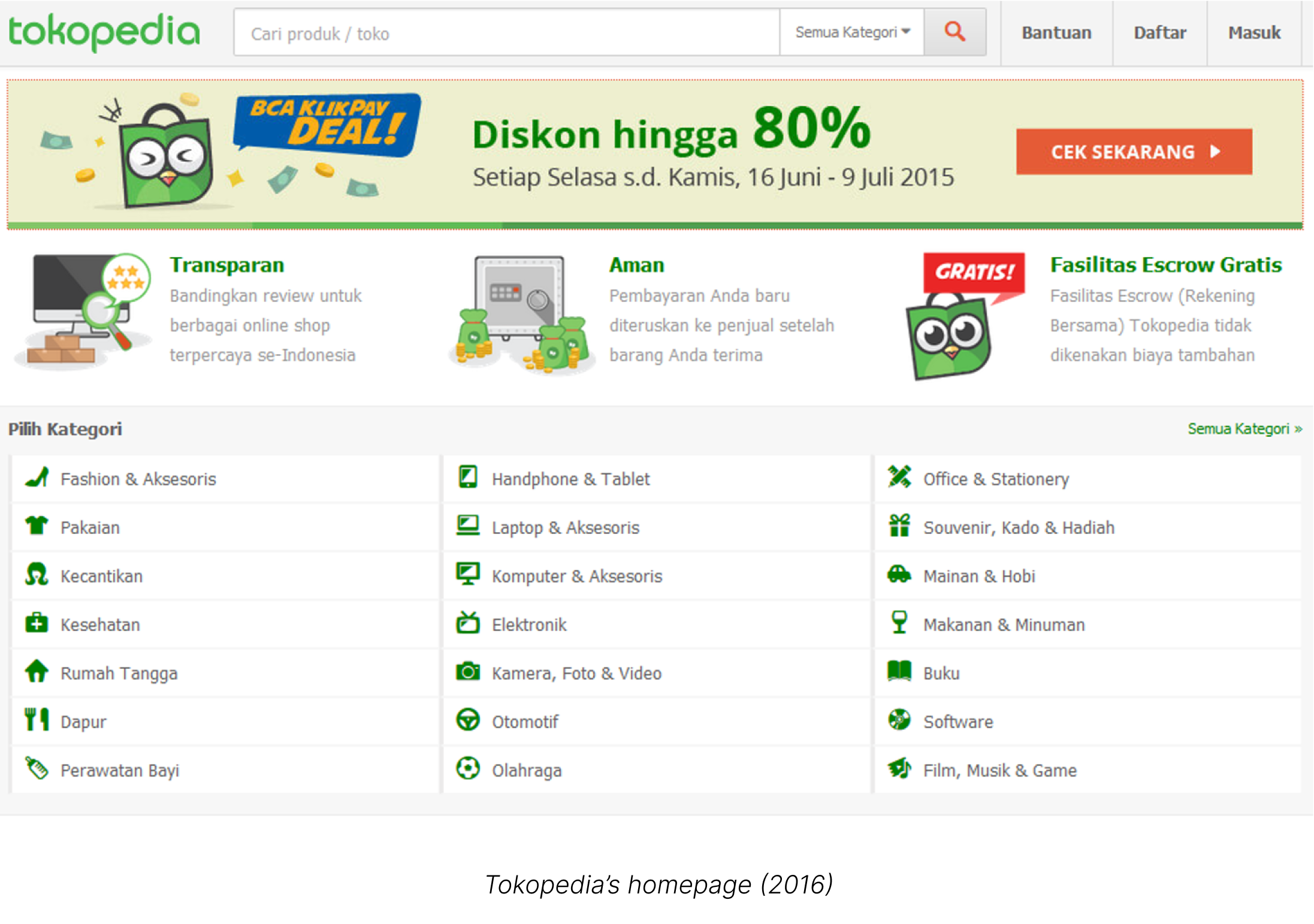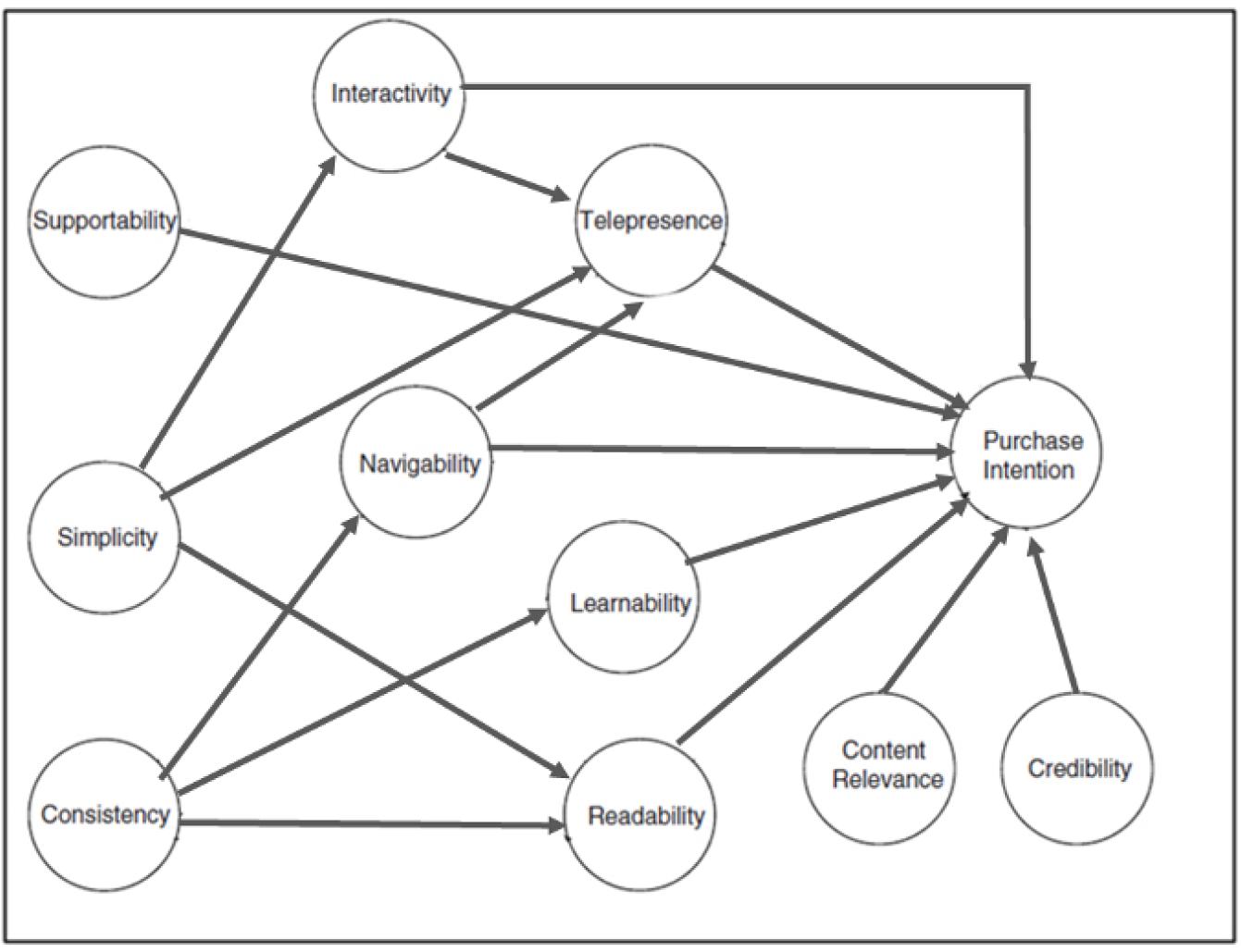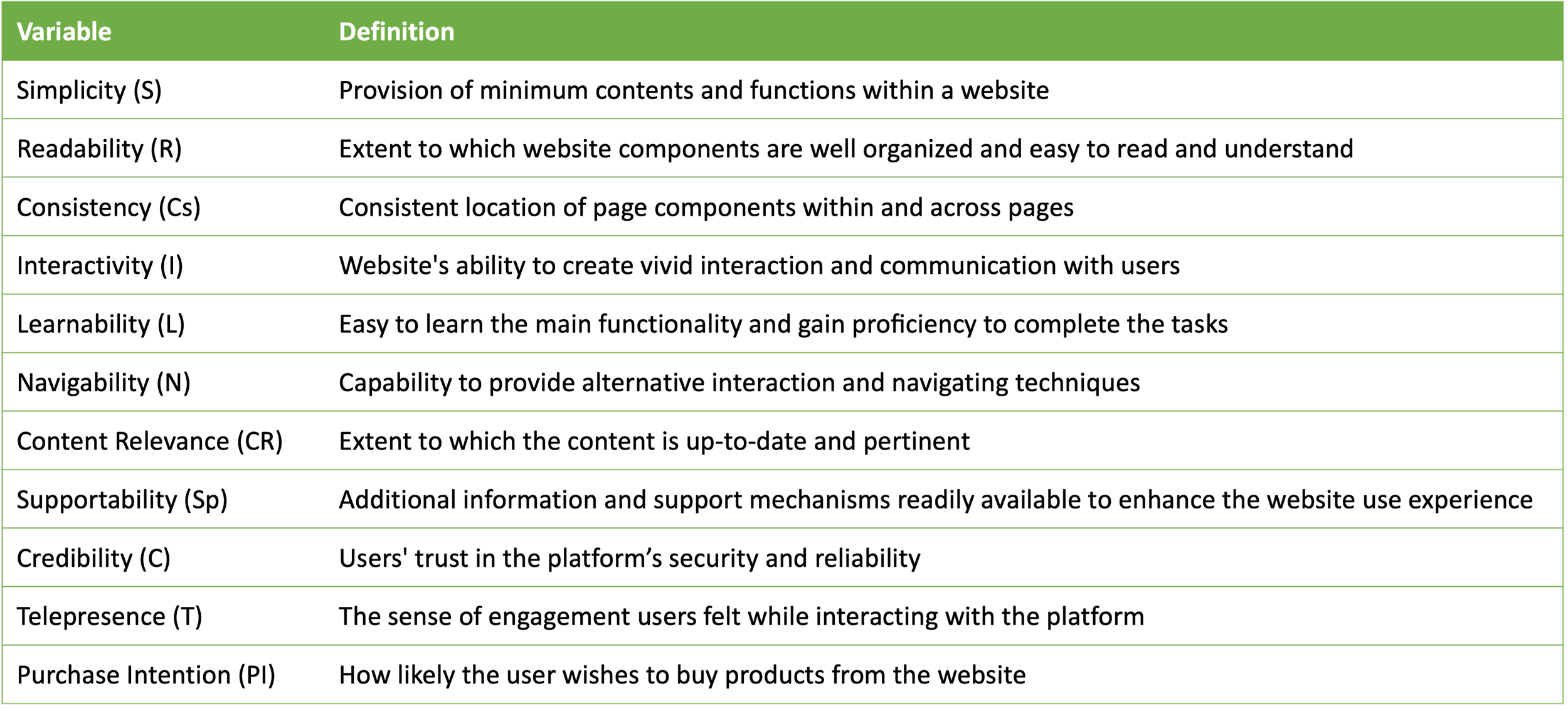
Elevating Tokopedia Shopping Experience
Understanding Usability Factors Affecting Purchase Intention in E-commerce Website (Tokopedia)
What is Tokopedia?
Tokopedia is an online e-commerce website established in August 17, 2009. It is an Indonesian online shop encyclopedia in a form of online mall which brings sellers and buyers together and making online e-commerce transaction safer and more convenient.
With a vision to “Developing a Better Indonesia through Internet.”, Tokopedia has a program in supporting Small and Medium Enterprises (SME) and individual business operators to develop their businesses and market their products online.
Project Details
Role :
UX research, Survey, Data analysis
Client :
Tokopedia (academic work)
Tools :
Google Form, SPSS, Lisrel 8.80
Project Duration :
Feb - May 2016
Background
In a fast-growing digital landscape like Indonesia’s, the rise of e-commerce platforms has revolutionized how people shop. Tokopedia, one of the biggest players in the Indonesian online marketplace, has made significant strides. Yet, with increasing competition, the user experience (UX) became a critical differentiator in ensuring long-term customer retention and purchase intention.
As a UX researcher, my mission was to dive deep into the minds of Tokopedia users, identifying pain points and usability barriers that prevented them from completing purchases. This case study highlights my journey of research, discovery, and solution-driven design that transformed Tokopedia's usability to improve the overall user experience and increase purchase intentions.
Users Love Tokopedia, but There’re Some Problems
According to a preliminary study conducted using online questionnaire to 123 respondents, 84.5% of them feel that there are still shortcomings or difficulties in shopping on Tokopedia. We identified the major pain points:
Unconvincing product images and details
25%
Incomplete product information
20%
Lack of technical guidance for using the site
12%

Goals: Turning Hesitant Users into Confident Shoppers
Our mission was straightforward: understand what drives users to trust Tokopedia enough to make a purchase, and determine which usability factors could make that happen. Ultimately, we wanted to identify the exact touchpoints where we could improve the user experience to turn more visitors into satisfied customers.
Research Method
To achieve these goals, we used Structural Equation Modeling (SEM) to evaluate user responses and analyze relationships between usability factors and purchase intention. The SEM method was chosen for its effectiveness in understanding complex relationships between latent variables.
The results will later be elaborated and analyzed further using Technology Adoption Lifecycle (TALC). The final results of this study are expected to provide improvement strategies that could be implemented for the development of Company A.
Research Process
Survey Design
With the key pain points identified, we use a usability construct model on purchase intention. This model could provide broader information and knowledge because it takes usability constructs, which directly and indirectly related to purchase intention, into account.
Lee & Kozar. (2012). Understanding of website usability: Specifying and measuring constructs and their relationship. Decision Support Systems 52, 450–463.
There are 11 variables used in this research based on the framework:
A total of 729 responses were analyzed
Data was collected from users who had made purchases on Tokopedia within the last three months, residing in DKI Jakarta and West Java.
The data type used in this study is primary data. The data is collected through a quantitative questionnaire created using Google Forms and distributed online. The questionnaire uses a likert scale of 5 to find out the level of agreement.
Analyzing the Data Using Structural Equation Modeling (SEM)
Once we collected the survey responses, we employed Structural Equation Modeling (SEM) to analyze the data. SEM allowed us to map out the relationships between different usability factors and purchase intentions, revealing both direct and indirect influences.

The Discovery: Trust and Clarity Are Key to Conversions
Our findings were eye-opening. The data showed that three factors stood out as the most critical in shaping users’ purchase behavior:
Credibility – Users needed to feel safe and secure during transactions. If they believed their personal and financial information was protected, they were far more likely to hit the "Buy Now" button.
Readability – A clear and easy-to-read layout dramatically boosted users' confidence. Complex, cluttered pages made them second-guess their choices, but simple, readable content helped them move forward with ease.
Telepresence – This was a fascinating discovery. Users felt more comfortable making purchases when the website offered a sense of personal connection—features that made them feel “present” and engaged in the process, almost as if they were shopping in a real store.
These factors directly impacted users' purchase intentions, making them the key levers for improving Tokopedia’s usability.
Additionally, simplicity and consistency through readability factor and interactivity through telepresence factor also indirectly influenced the shopping experience by enhancing readability and interactivity, showing us that a well-organized, clean interface could make a world of difference.
Recommendations: How Tokopedia Can Win More Customers
According to Technology Adoption Lifecycle, we can conclude from the result of this research that Tokopedia’s consumers are in Early Majority stage in accepting Tokopedia as one of Indonesia’s online e-commerce website.
With these insights in hand, we crafted a set of recommendations for Tokopedia to transform its user experience:
Build Trust with Enhanced Security Features
The company should provide education and make promotions regarding shopping security and provide warranty for every purchase made in Tokopedia. Furthermore, to increase Tokopedia’s credibility in Indonesian consumers’ eyes, those efforts should be compensated by good customer service support.Improve Readability for a Seamless Experience
By adopting a more minimalistic design with appropriate font sizes (16 pixels or higher) and strategic use of white space, Tokopedia could make its product pages more digestible. This would ensure users could quickly find the information they needed to make confident decisions.Create Connection with Engaging Interactivity
With Early Majority stage market condition, as a marketplace, Tokopedia could collaborate and provide education to the Small & Medium Enterprise (SME) business community about the safety and importance of e-commerce in reaching broader markets, so that SME business operators could be interested in marketing their products through Tokopedia.
Reflection
Personal Learnings
When I conducted this research, the startup ecosystem in Indonesia was just emerging, especially in its early stages. At the time, user experience (UX) was still a relatively unfamiliar concept in the region, and this project marked my first encounter with UX and usability principles. Delving into usability research for e-commerce websites presented a steep learning curve, and I initially found it challenging to grasp the full scope of UX and usability.
However, I discovered a genuine passion for exploring how users interact with technology and how those insights can elevate the overall user experience. This journey sparked my enthusiasm for understanding user behavior in depth, reinforcing my commitment to creating more intuitive and impactful digital experiences.









